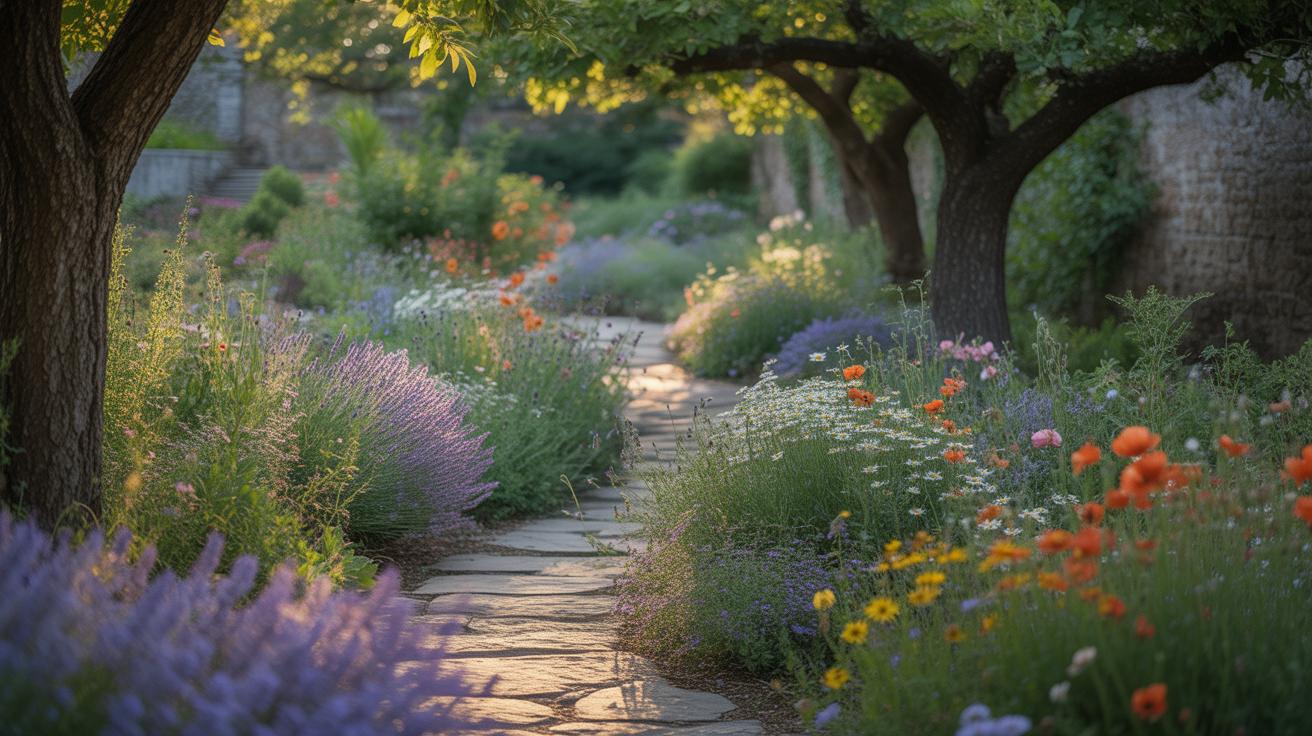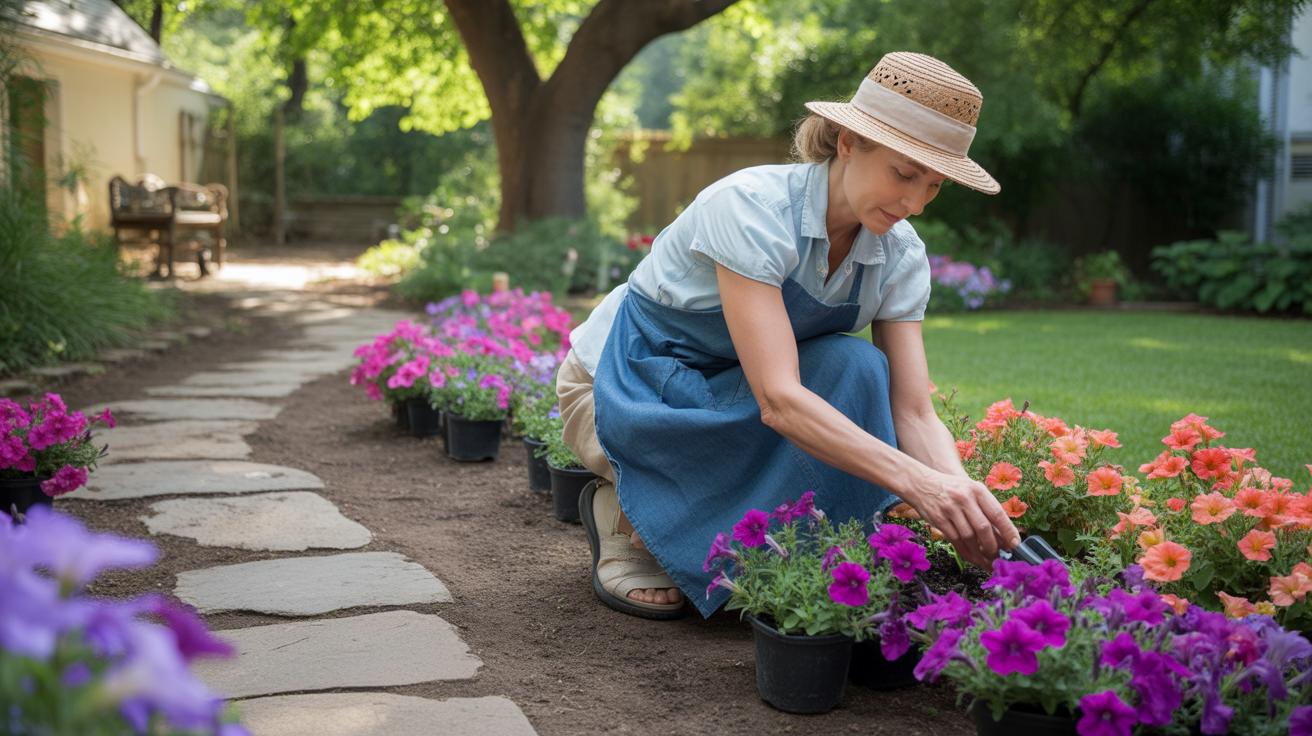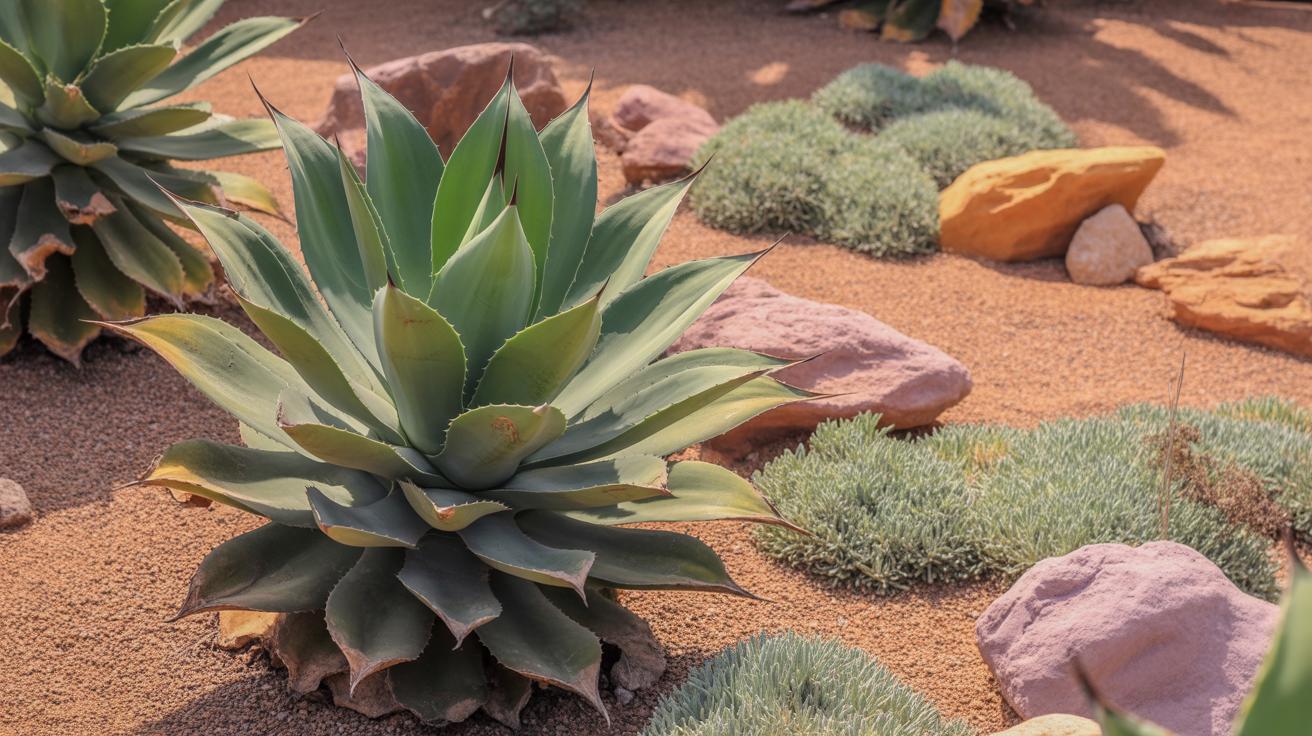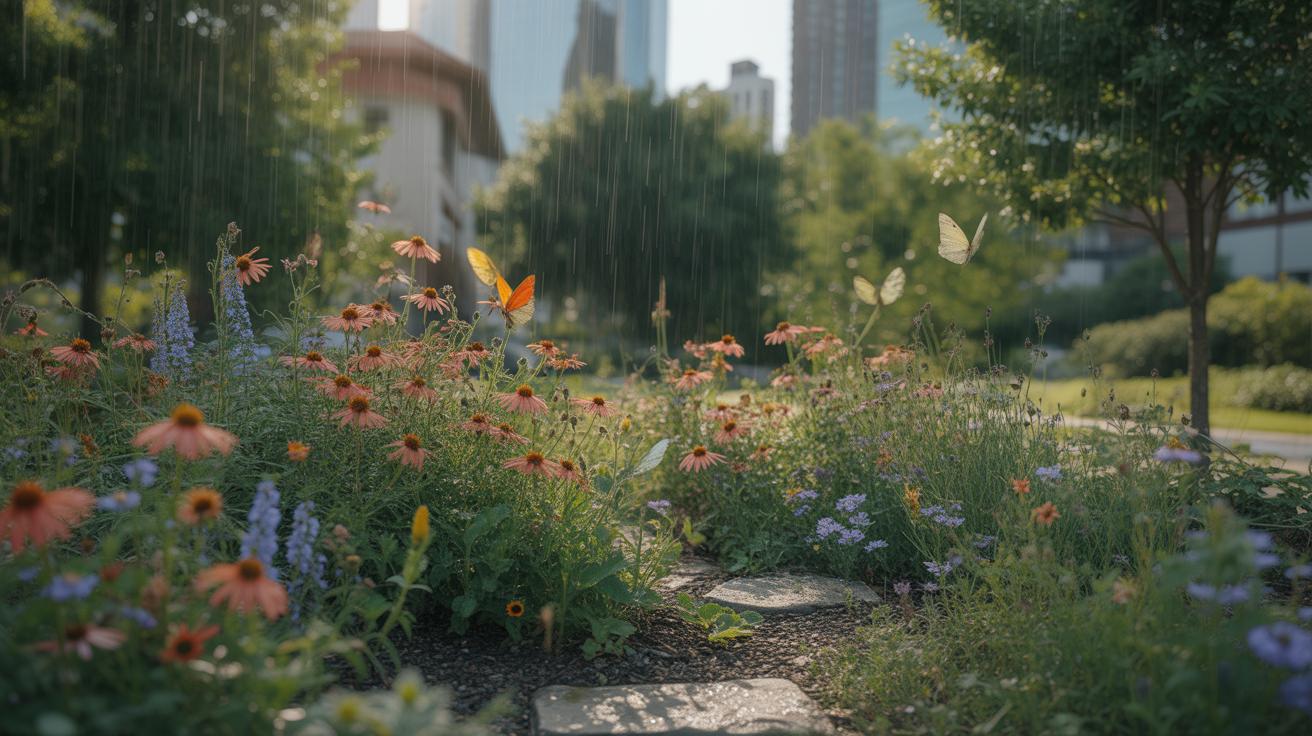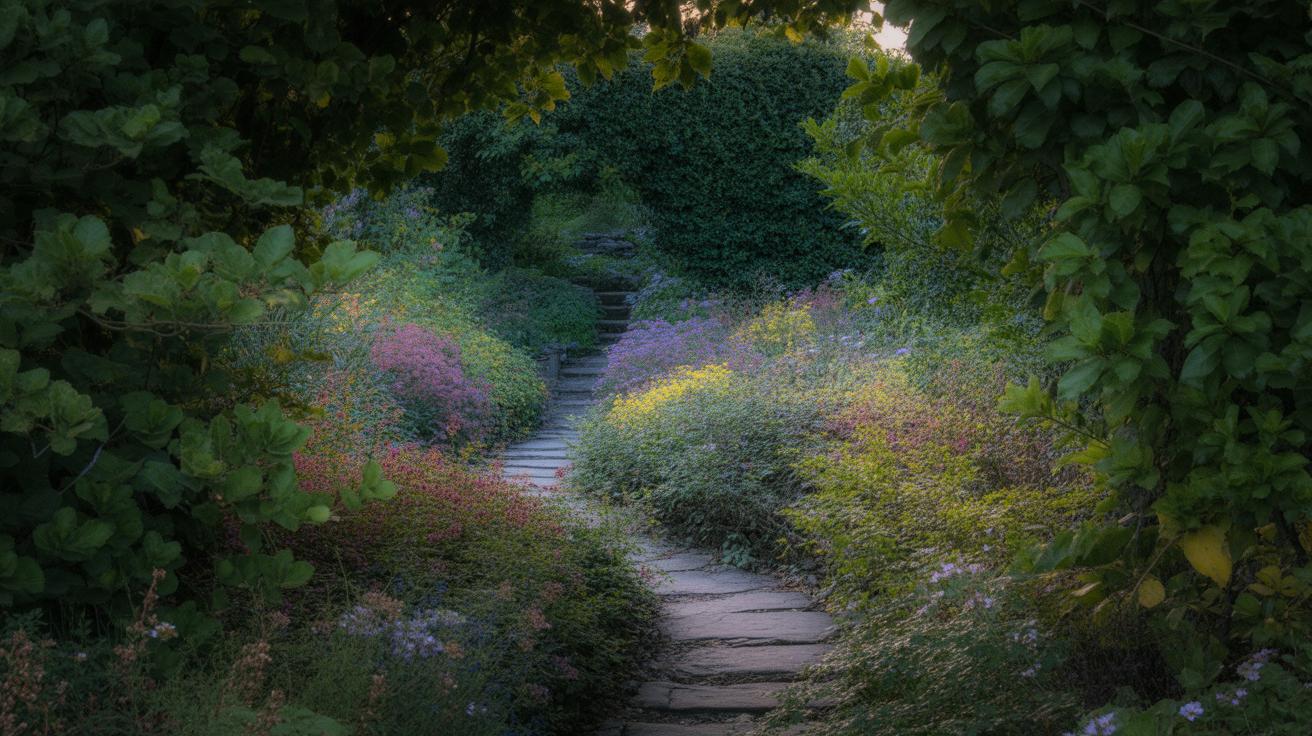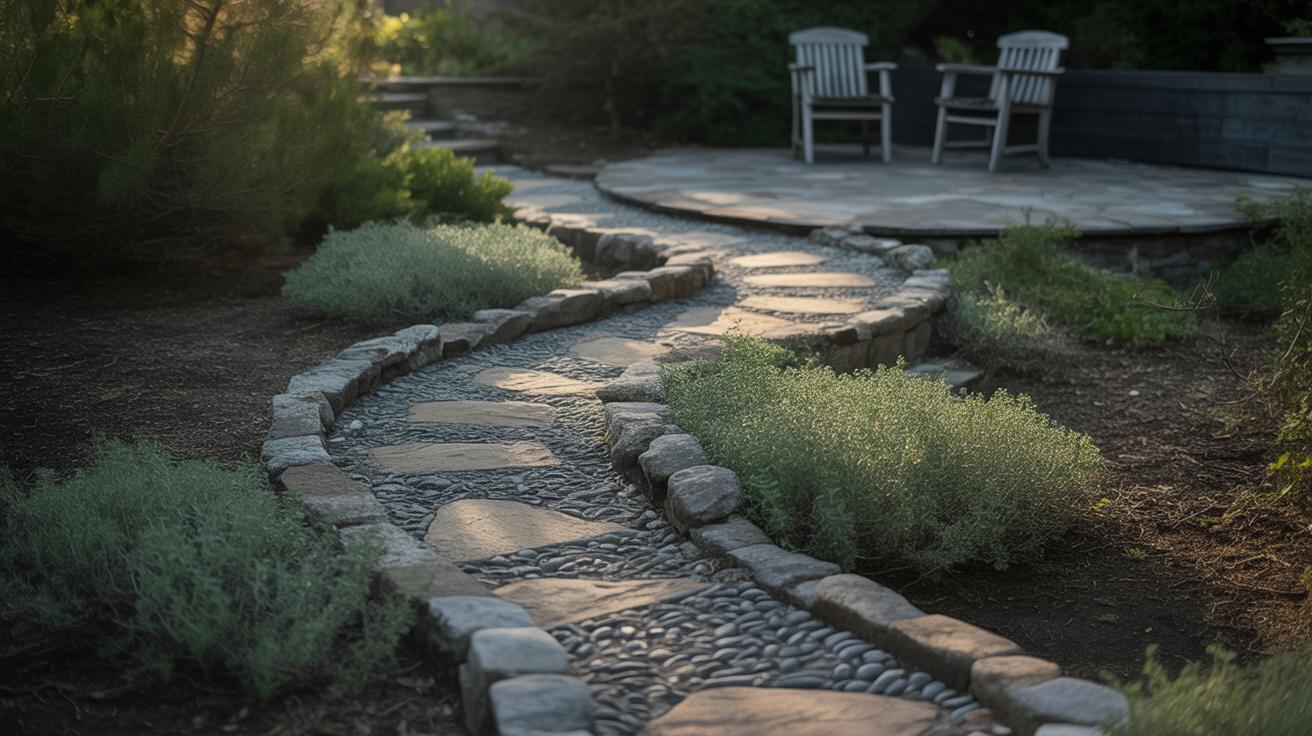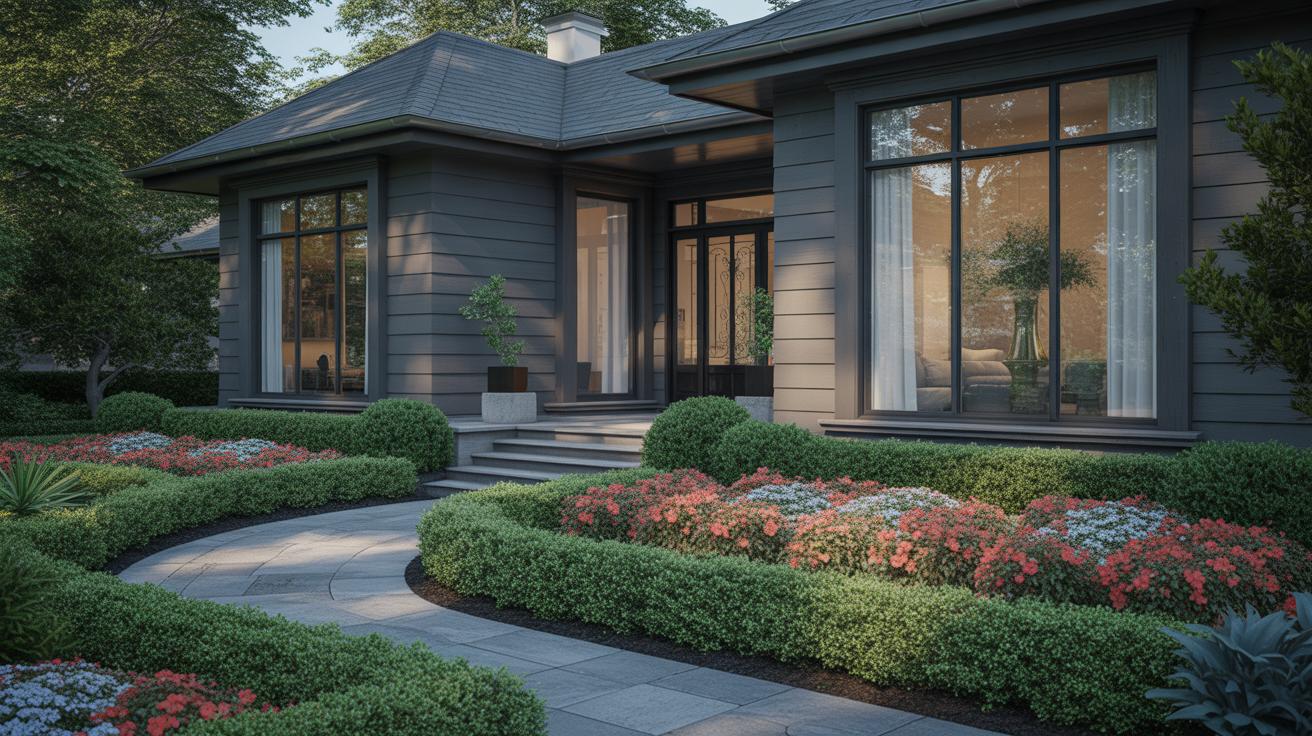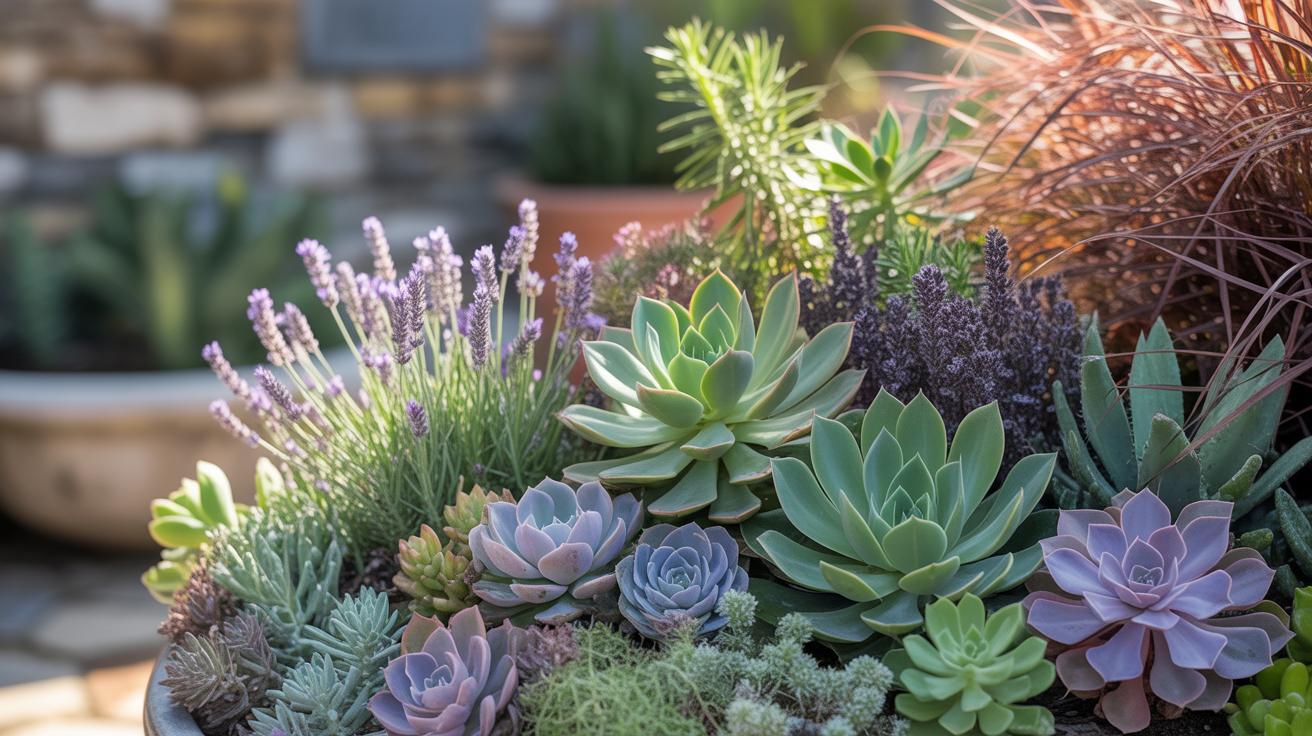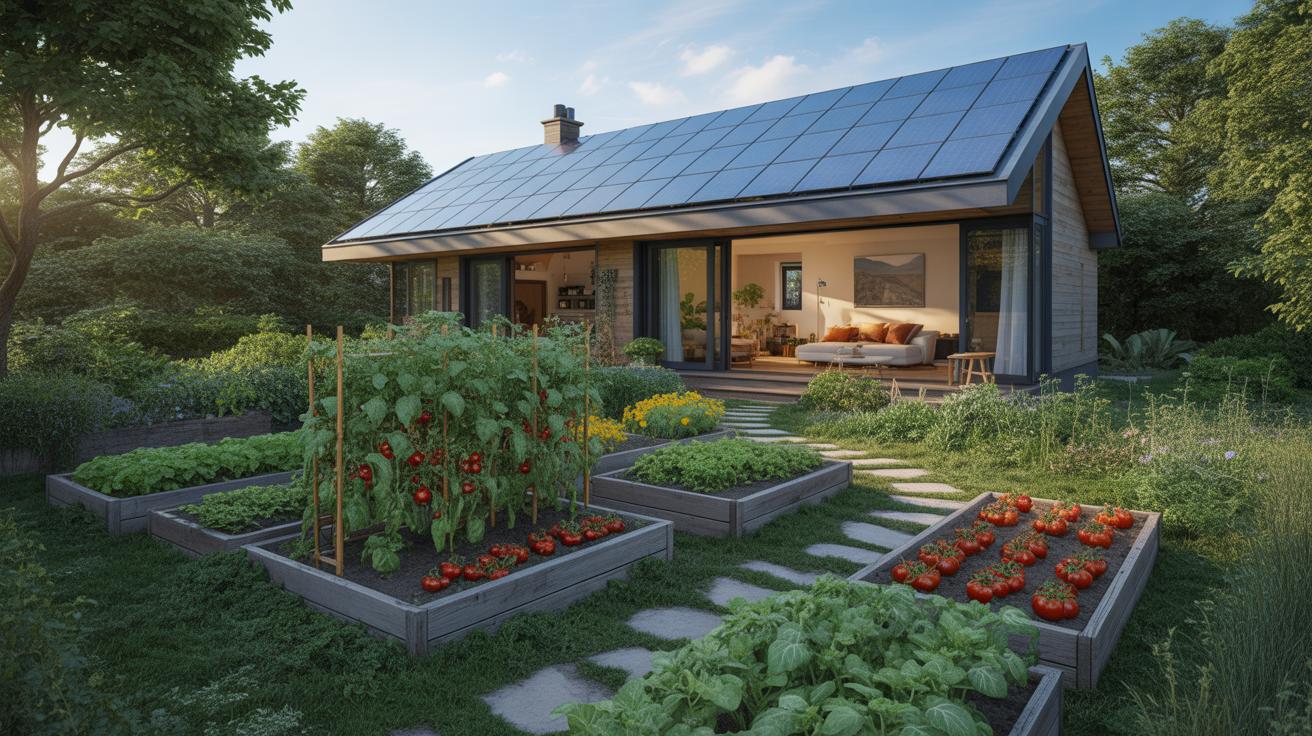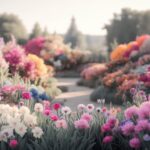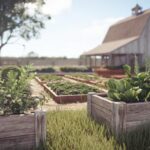Introduction
Creating a beautiful garden yard can transform your outdoor space into a relaxing and enjoyable area. You don’t need a big yard to make it look nice. With some simple ideas and a bit of effort, your garden yard can become a place you love to spend time in. From planting flowers to adding small decorations, there are many ways to make your yard attractive.
This article explores practical and easy garden yard ideas that anyone can use. We discuss how to decorate your garden yard, ways to maintain it, and different styles you can try. Whether you want a colorful flower garden or a neat green space, these ideas will help you make your outdoor area beautiful and welcoming.
Plan Your Garden Yard
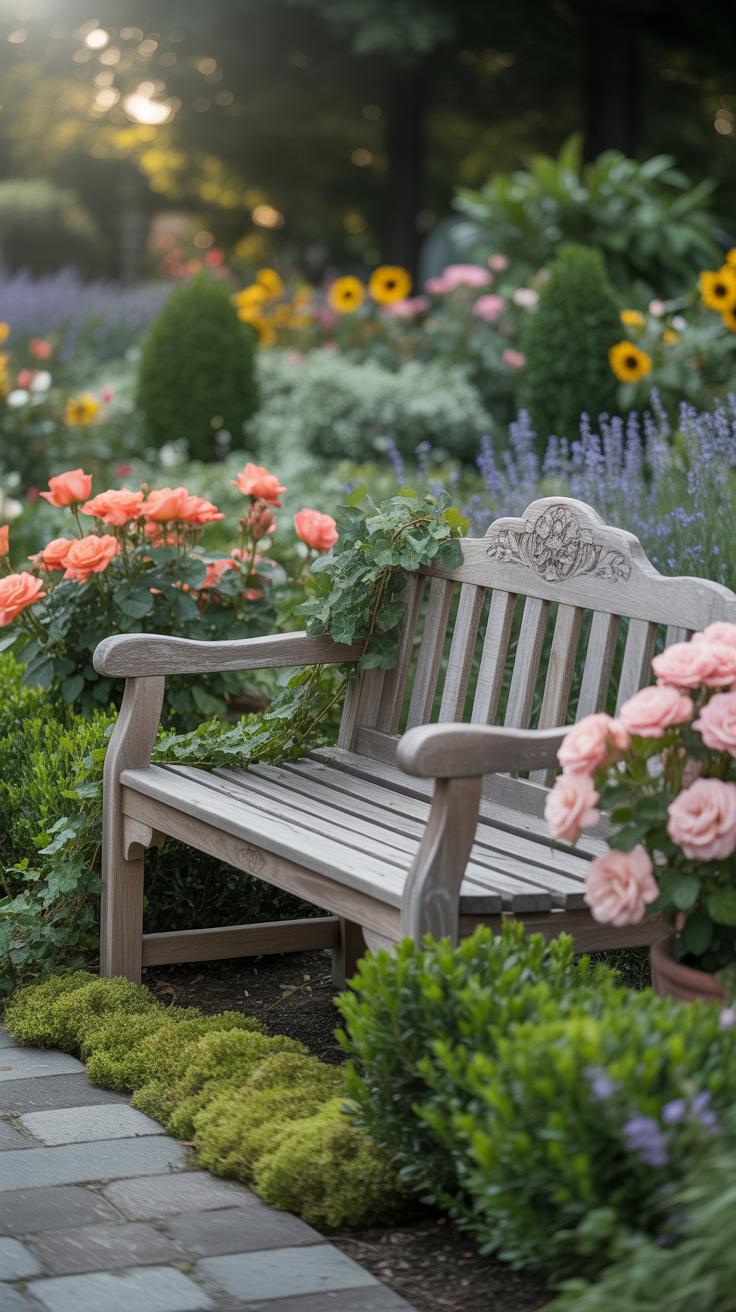
Start by measuring your garden yard carefully. Knowing the exact size helps you figure out how much you can fit without overcrowding. Take note of the shape, too—sometimes unusual corners or slopes can influence what works best.
Next, think about what you want from the space. Are you imagining a spot for flowers that bloom through the seasons? Or maybe a small vegetable patch that offers fresh produce? Don’t forget to consider seating areas if you want a place to relax outside. It’s tempting to cram in everything at once, but prioritizing what matters most will save you headaches later.
Sunlight and shade patterns play a big role too. Watch your yard at different times of the day. Some areas might bake in the sun all afternoon while others stay mostly shaded. This observation will guide where you put certain plants and features. Even a small shady nook could become an ideal spot for a bench or shade-loving plants.
Choosing What to Grow
Deciding what to grow depends a lot on your available space and climate. If you have limited room, vertical gardening or container plants might help maximize what you have. On the other hand, if you enjoy fresh food, herbs or easy vegetables like lettuce or radishes are great starters. They don’t require too much fuss but still feel rewarding to grow.
Personal taste matters too. Think about colors, textures, or scents you like. Maybe you prefer greenery over flowers or want to attract butterflies. For beginners, plants like marigolds, sunflowers, or basil usually do well and tend to be forgiving if you miss a watering or two.
Understanding Sunlight
Observing sunlight isn’t as complicated as it sounds. Spend a day noting where light hits your yard—morning, midday, and afternoon. Some spots get full sun (six or more hours), while others might get partial sun or just dappled shade. This influences which plants thrive and which struggle.
Sun-loving plants need unobstructed light; shady spots often suit ferns or hostas better. If you place a sun-loving plant in the shade, growth slows or it might fail altogether. Meanwhile, too much sun for shade plants often burns leaves. You might find parts of your yard change with the seasons too, so adjusting as you go is okay. It’s a bit of trial and error, really.
Add Color With Flowers
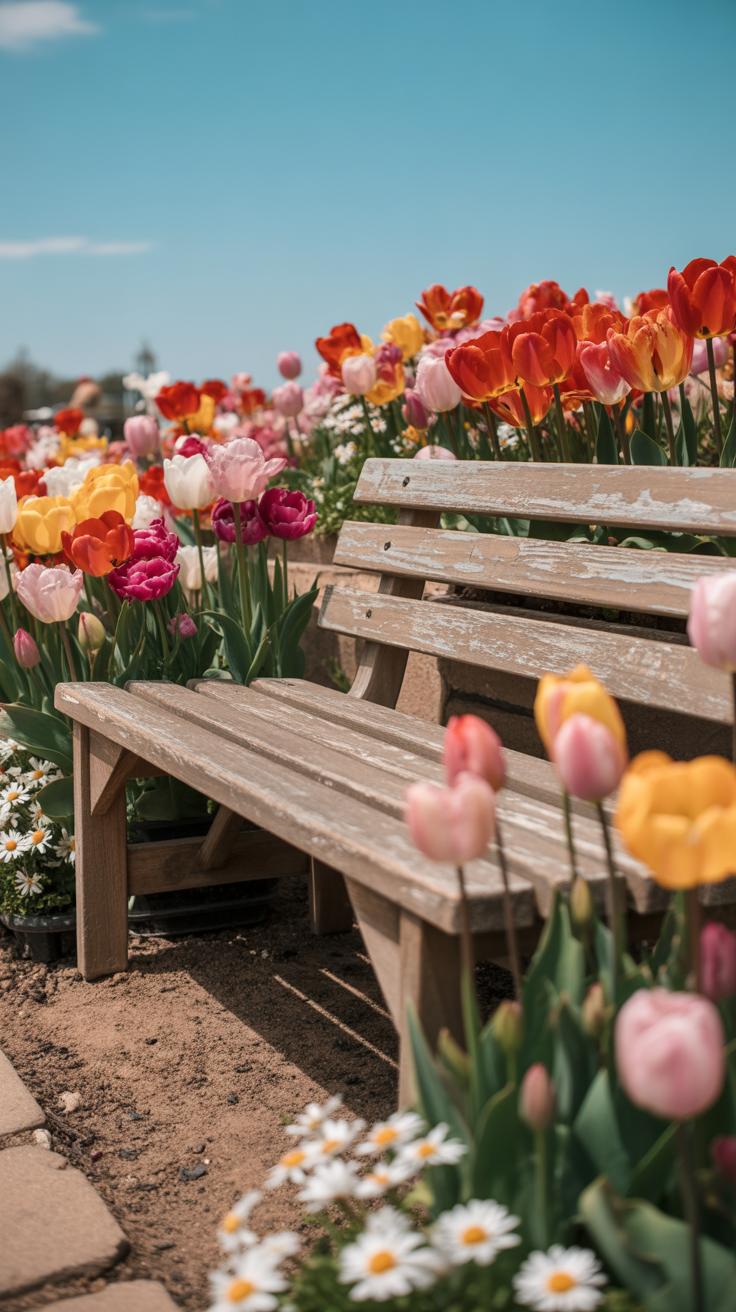
Flowers bring a kind of energy to a garden yard that’s hard to ignore. They add bursts of color and life that just lift the whole space. You might find yourself stopping for a second longer, just to soak it in. Some flowers are easier than others to grow—like marigolds, zinnias, and petunias. They tend to be forgiving, bright, and reliable, which is great if you’re not ready to spend hours fussing over your plants.
Basic care usually involves good soil, watering a few times a week, and picking a spot with the right amount of sun. But the details do matter; for instance, petunias prefer full sun, while impatiens can handle more shade. It’s tempting to just plant whatever looks good, but thinking a bit about their needs helps keep your garden lively through the seasons. You don’t have to be an expert, but paying attention to a flower’s light and water preferences can save you some frustration.
Flower Bed Ideas
Flower beds don’t need to be complicated. Shapes like gentle curves or simple rectangles work well and don’t get out of hand. You could start small—maybe a flower bed just two feet wide and as long as you like along a walkway or fence. That way, it’s easy to reach and maintain without feeling overwhelming.
Arranging flowers in layers can create depth—taller plants like sunflowers or foxgloves at the back, shorter ones like alyssum or pansies in front. Sometimes mixing colors can be fun, but sticking to a few shades creates a calmer, unified look. It’s all a bit personal. You might like messy, natural clumps or sharp, tidy rows. Both can look nice if you keep an eye on spacing and deadheading flowers as they fade.
Choosing Flower Types
Picking flowers can be confusing since there’s so much choice. Annuals bloom all season but only last one year. Perennials come back every year but might have shorter blooming periods. If you want constant color, annuals might feel like work but deliver steady results. Perennials require some patience but pay off in successive seasons.
Think about your yard’s lighting and climate, then decide what kind of maintenance fits your routine. Maybe mix both types—some bright annuals to fill gaps alongside reliable perennials like coneflowers or daylilies. You’ll want flowers that aren’t too fussy, especially if you’re just getting into gardening. It’s okay if you experiment, though; that’s half the fun in growing a garden that feels like it’s truly yours.
Create Cozy Seating Areas
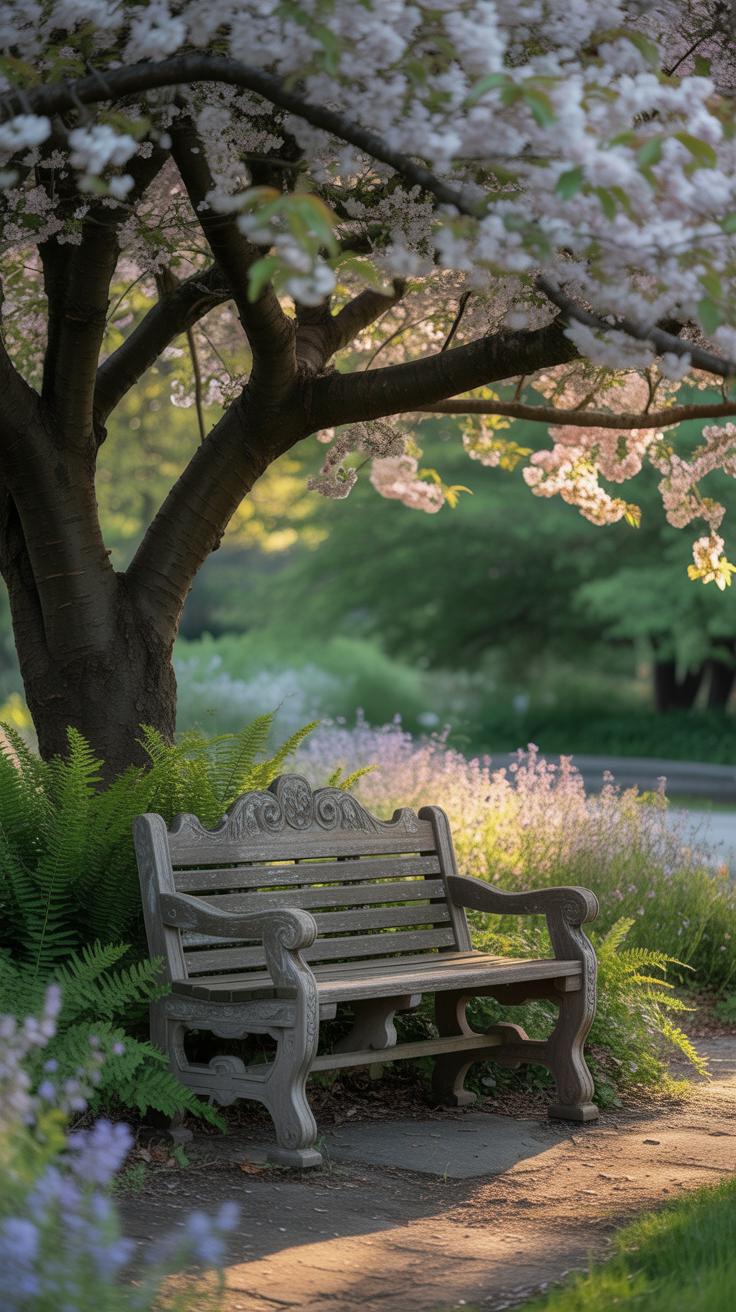
Why Seating Makes Your Yard Inviting
Adding seating to your garden yard changes everything. It invites people to stay longer, to relax and enjoy the space instead of just passing through. It’s surprising how even a simple bench can make a yard feel more welcoming. When there’s a place to sit, you’re more likely to spend time outside, maybe reading a book or having a quiet chat. It makes the yard less of a chore and more a refuge, even if it’s small or simple.
Don’t worry about fancy furniture or expensive designs. Just having a chair or cushion tossed near a flower bed can make a difference. I once placed a few cushions under a tree, and it instantly turned into our favorite spot for afternoon tea. It doesn’t have to be complicated or costly, really.
Best Spots For Seating
Finding the right spot is part of the fun. Look for areas where shade and sunlight balance out during the day. Sitting where you can enjoy a good view—like a garden bed, a bird feeder, or even a quiet corner—makes the spot more attractive.
Sometimes, the limited space in a tiny yard means you have to be creative. A narrow path with a slim bench or folding chairs can work. Or maybe near a tree where you get dappled shade, but still see the whole yard. Think about where you’d want to sit if you were just stepping outside for a moment. That instinct usually points you in the right direction.
Materials For Outdoor Seating
Choosing materials depends a lot on your climate and how much time you want to spend on upkeep. Wood feels natural but can need regular treatment to avoid weather damage.
Metal chairs can last long and offer a sleek look but might get hot or cold depending on the weather. Plastic options are light and easy to move around, but they don’t always blend well with garden aesthetics, unless you pick the right design.
One idea I like is mixing materials—maybe a wooden bench with cushions or a metal frame with a wooden seat. Cushions add comfort but remember they might need to be stored when it rains. Choosing something durable, yet comfortable enough to make you want to spend time outside, is the trick.
Use Paths And Walkways
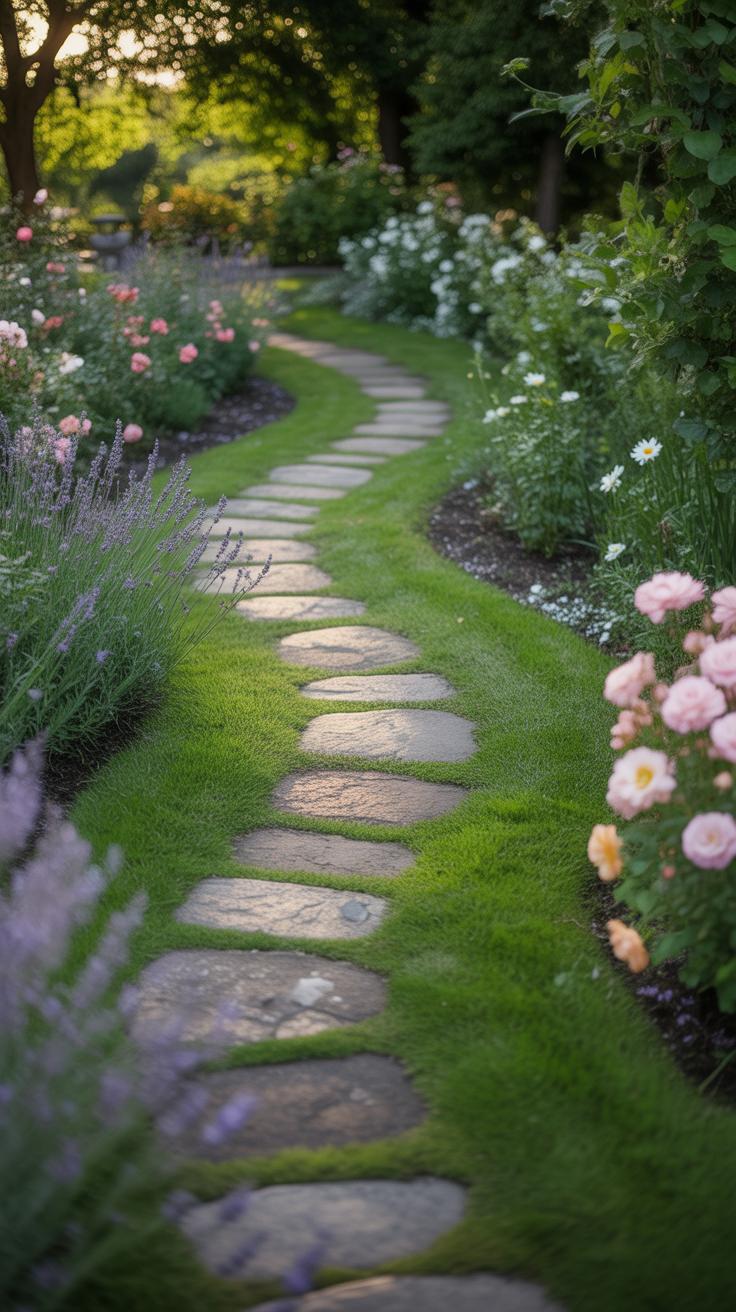
Paths and walkways do more than just guide your steps—they actually shape how you experience your garden yard. They can carve out zones, separate flower beds from lounging areas, or lead visitors on a gentle tour of your outdoor space. When done simply, they bring order without fuss, kind of like a quiet organizer you didn’t know you needed.
Materials like gravel, flat stones, or wooden planks work well without demanding too much from your budget or skills. Gravel is easy to spread and good for drainage; stones feel natural and add texture; wood gives warmth, though you’ll want to watch for weathering. I once laid a stone path that took a weekend, and even now, it feels like the yard has a little more life—more movement.
Designing Paths
Good paths don’t just exist—they feel intentional. Think about where you naturally walk most and what you want to show off. A winding route may suit a more casual garden, inviting you to slow down, while straight lines might be better for quick access between spots. You want paths wide enough to walk comfortably but not so wide they dominate the space.
Sometimes it’s helpful to mark the path with stakes or string before committing. That way, you can see how it fits. And remember, a path should connect places you actually use; there’s no point in a fancy walkway that ends in thin air.
Materials And Care
Choosing materials for your path depends partly on look and partly on maintenance. Gravel requires occasional raking and topping up but lets water drain through. Flat stones can work for years but might shift or grow moss in shady spots. Wooden planks or sleepers need treatment and periodic checks for rot or splinters.
Clearing leaves, keeping edges tidy, and dealing with weeds that sneak in always come up, no matter the material. I find that a quick sweep or rake every few weeks keeps paths inviting, especially in fall. Consider your patience level too—some materials are simpler than others. In the end, paths help organize your yard and invite exploration, but they reward care if you want them to look great over time.
Incorporate Garden Decorations
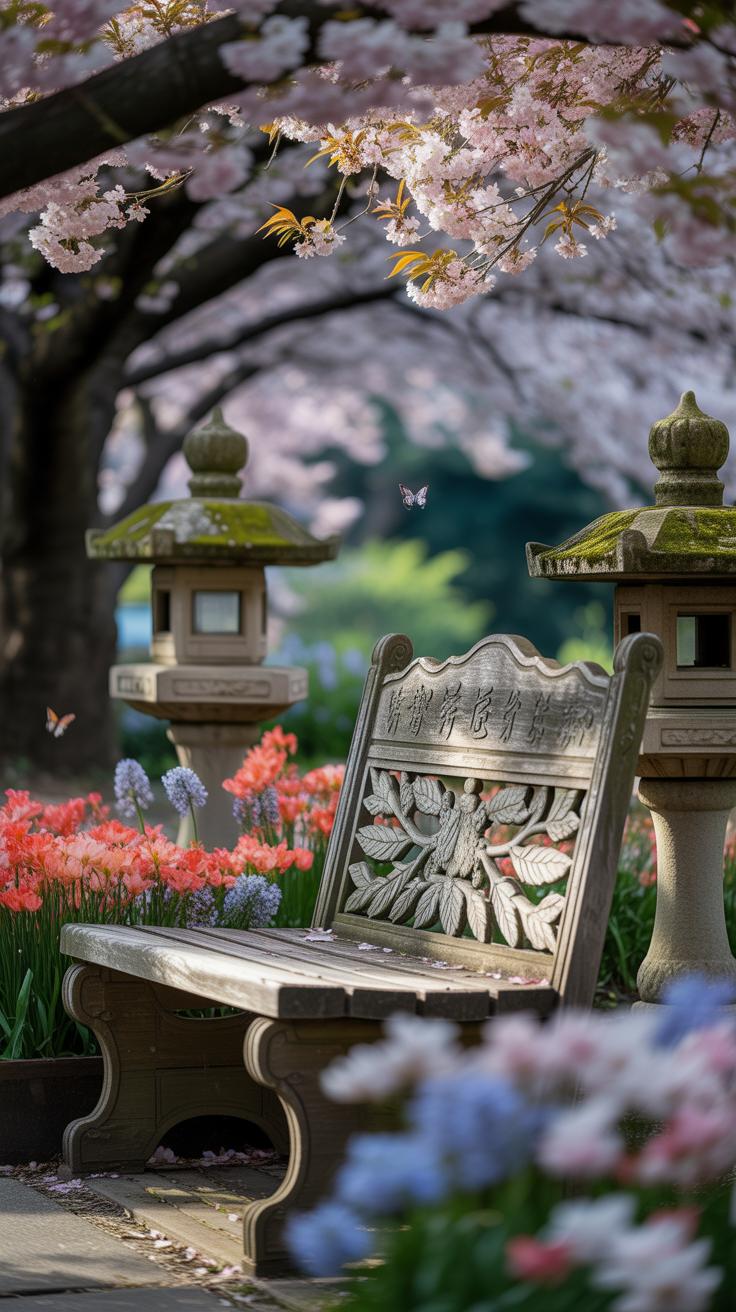
Small garden decorations can make a surprising difference in the overall feel of your outdoor space. Things like garden gnomes, pots, bird feeders, or string lights bring a touch of charm that feels personal and inviting. I think it’s easy to overlook how these little accents can brighten a corner or draw your eye along a path.
Popular garden decorations include:
- Garden gnomes or statues: Add whimsy or personality — sometimes even a bit of quirkiness — giving life to empty spots.
- Decorative pots: Useful for plants but also for seasonal displays. They can act as color pops or focal points.
- Bird feeders and houses: Bring movement and sound. Plus, they encourage wildlife visits, which feels nice if you like to watch birds.
- Outdoor lights: From fairy lights to lanterns, lighting can extend garden use into the evening and add atmosphere.
Choosing decorations that fit your garden is key. Think about the space you have—too many items can clutter a small area, while an expansive garden might feel empty without enough decor. Also, consider your garden’s style. Rustic gardens pair well with weathered wood pieces or stone ornaments, while modern yards suit sleek, minimal designs. Matching the scale matters, too. Large statues might overwhelm a tiny patio, while smaller touches could get lost in a big lawn.
When I picked decorations for my yard, I realized it’s not just about what looks nice individually but how each piece talks to the others. It’s a slow process, involving moving things around until it feels just right—at least for a while. Why not experiment with a few pieces and see what changes in the vibe? You might surprise yourself.
Maintain Your Garden Yard
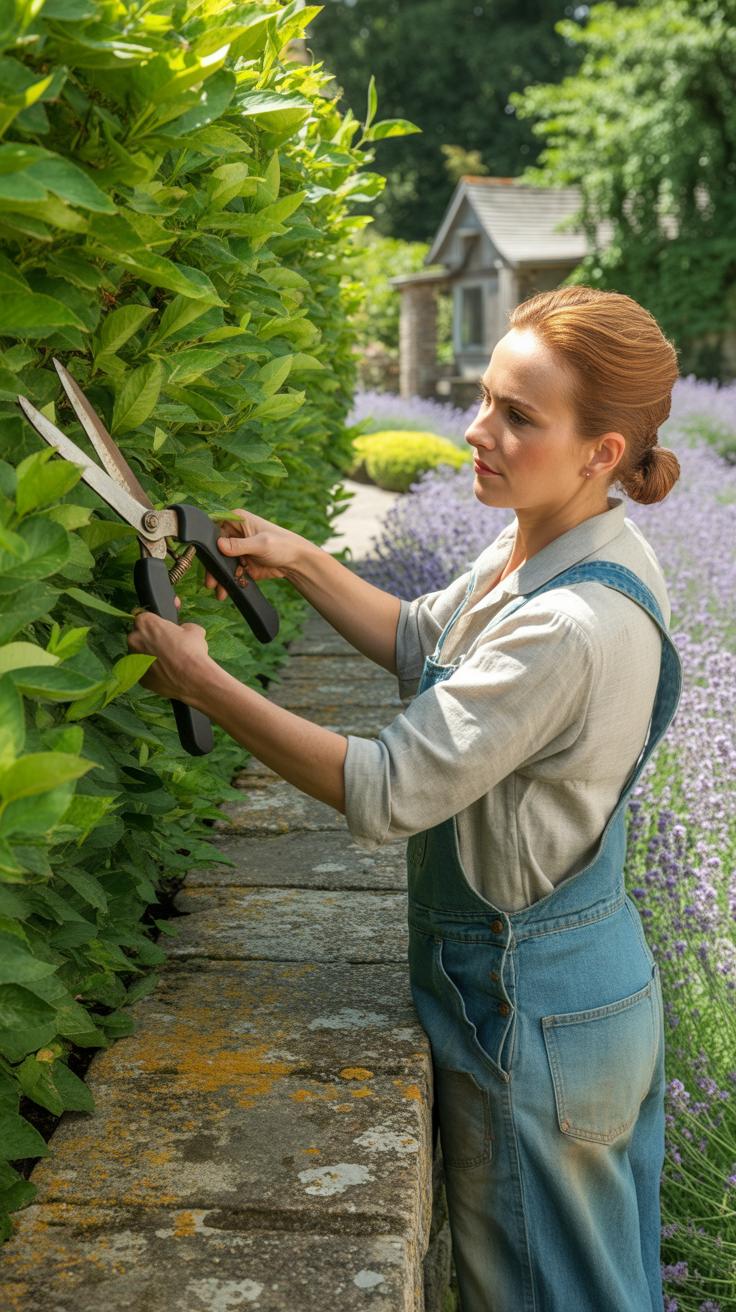
Taking care of your garden yard isn’t always straightforward. It involves a few basic tasks that need regular attention like watering, weeding, pruning, and feeding plants. These chores might seem obvious, but doing them right makes a big difference.
Watering Tips
When it comes to watering, timing matters. Early mornings or late afternoons usually work best since the sun isn’t too strong. This helps plants absorb water without it evaporating quickly. You don’t want to overwater either—some plants actually prefer dry soil between waterings. For instance, succulents don’t need much, but leafy vegetables do. You can check by sticking your finger a couple of inches into the soil; if it feels dry, it’s time to water.
Using a watering can or gentle hose spray helps avoid damaging leaves or soil. You might find that different types of plants in your yard need different amounts or schedules. Adjusting as you go along is part of the process.
Keeping Weeds Away
Weeds can sneak in fast and steal nutrients from your plants. Pulling them out by hand is the simplest method, though it’s somewhat time-consuming, especially if your garden is big. Mulching around plants is a good way to block weed growth since it covers exposed soil and keeps the ground cooler.
You might also try using a hoe or cultivating tool to disturb young weed seedlings before they get well established. It feels a bit tedious, to be honest, but staying on top of weeds early prevents them from spreading. And once you get the hang of weeding regularly, it becomes less of a chore and more like a little break in your day.
Add Green Spaces With Lawns
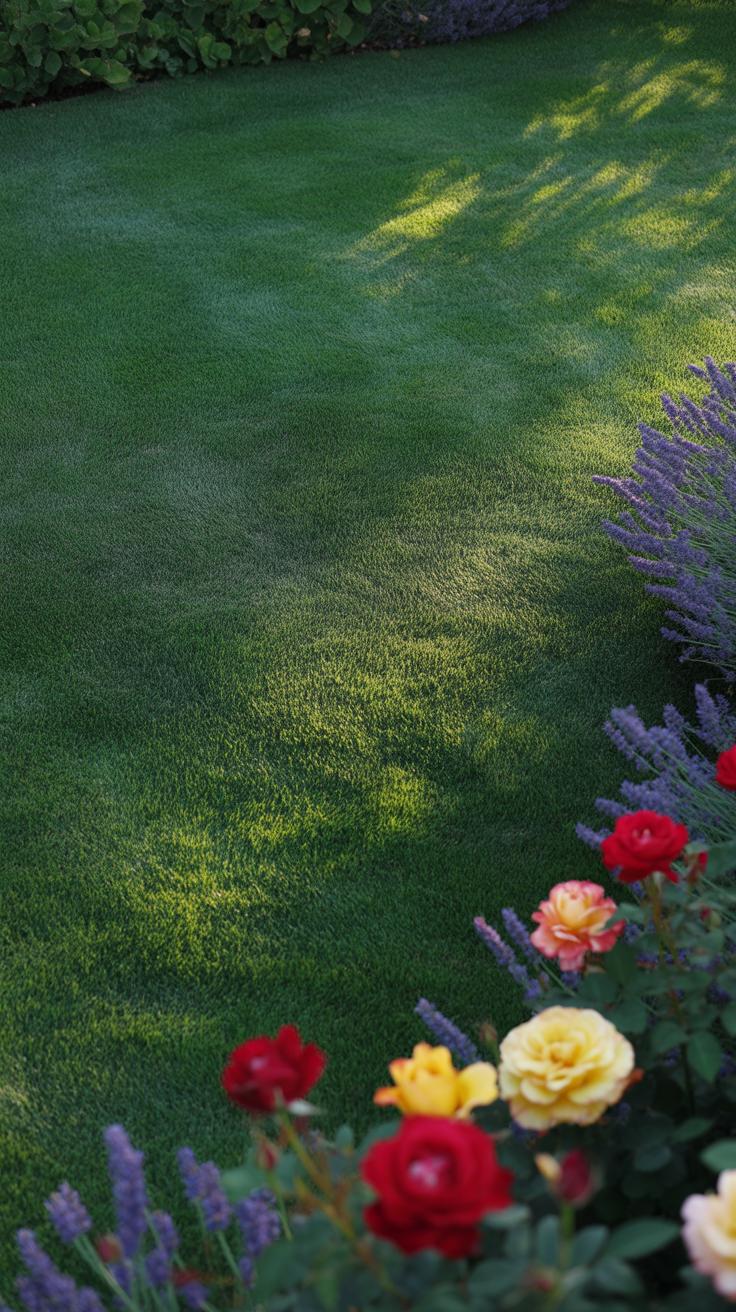
Lawns bring a kind of calm to your garden yard. They break up hard surfaces, offering a natural, soft feel that makes the whole space more inviting. I’ve noticed that a simple stretch of grass can pull an area together, creating a green canvas that lets other plants stand out without overwhelming them.
Planting grass isn’t just about throwing seeds down. You need to prepare the soil well—removing debris, loosening compacted earth—to give grass roots a good start. Watering is crucial, especially in the early days, but too much can drown the seedlings. Finding that balance is a bit like tuning a delicate instrument; it needs attention.
Choosing Grass Types
Picking the right grass can feel tricky since it depends a lot on your local climate and yard conditions. Cool-season grasses like fescue or ryegrass do better in cooler regions, while warm-season types like Bermuda or zoysia thrive in warmer places. If your yard is shady, consider fine fescues or St. Augustine grass, as some grasses simply won’t do well without enough sunlight.
It’s easy to pick a grass just because it looks nice, but asking yourself how much foot traffic the lawn will get—and how much effort you want to give it—makes a big difference. Sometimes, a lower-maintenance type might be better even if it’s not the lushest option.
Lawn Care Basics
Keeping your lawn healthy comes down to a few simple routines. Mowing regularly keeps grass at an ideal height, but cutting it too short stresses the plants. I tend to follow the one-third rule—never remove more than a third of the blade’s length at once.
Watering deeply but less often encourages roots to grow downward, making the lawn more drought-resistant. Feeding the lawn with a balanced fertilizer helps too, though timing matters. Feeding in early spring or late summer usually works best, but again, this depends on grass type.
Sometimes, despite best efforts, growth might look patchy. It can be frustrating, but patience and consistent care often bring results. After all, a lawn is more than just grass; it’s a living part of your garden’s harmony.
Plant Trees And Shrubs
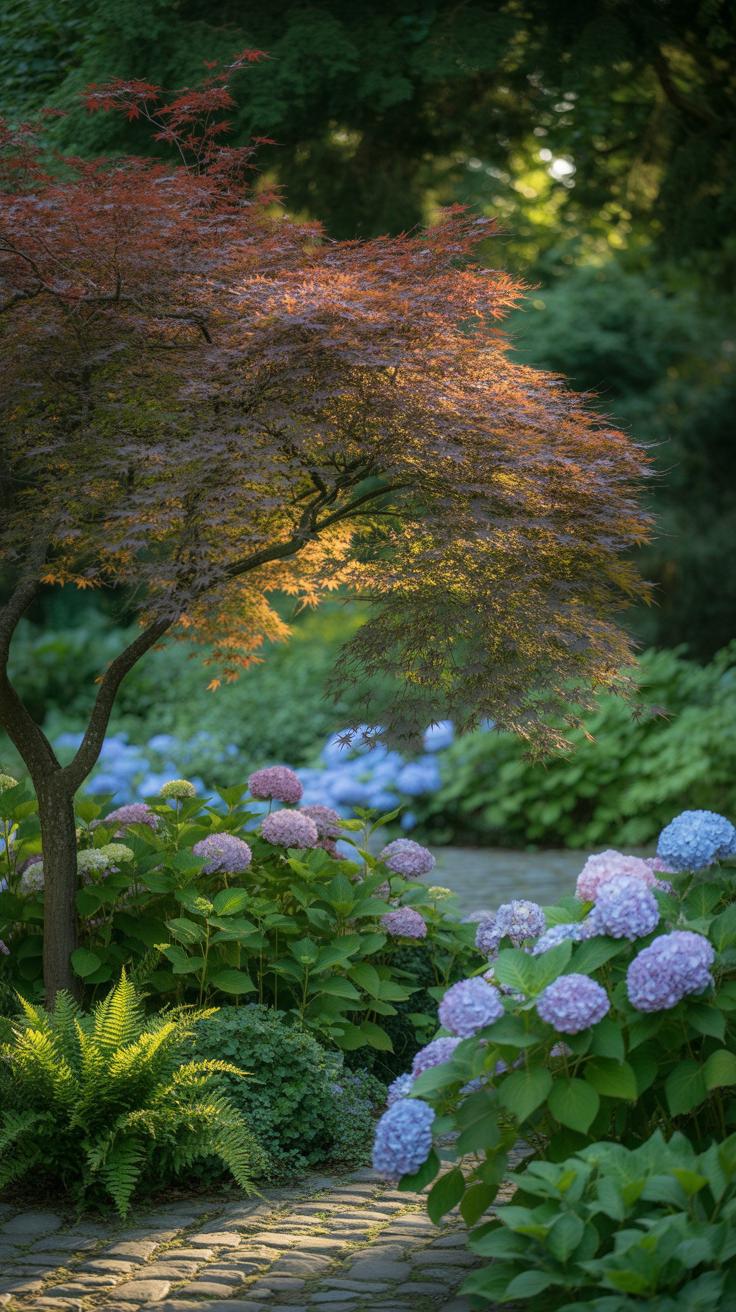
Trees and shrubs do a lot more than just fill space. They bring shade on a hot afternoon, which can make your garden yard much more enjoyable when the sun really beats down. Plus, they act like natural walls, giving you privacy without feeling boxed in by fences or walls. That sense of structure they provide—you know, those vertical shapes that break up the flatness—can really anchor the look of your yard. It’s like having a frame for everything that grows around them.
Picking The Right Trees
Choosing trees for small or medium yards can be tricky. You want something that fits without crowding or overwhelming your space. Think about the local climate, soil, and how much sunlight your yard gets. For example, a Japanese maple or dogwood often works well where space is limited, offering interest without huge roots or shade that’s too dense. Sometimes I’ve seen people pick towering trees without considering size, and then they regret it—overgrown and shading out too much. It’s all about balance, really.
Shrubs For Borders
Shrubs are fantastic for defining boundaries in a natural way. They’re not just green dividers; they add texture, color, and sometimes flowers or berries that bring your garden to life at different times of the year. You can use boxwoods or hydrangeas to create softer edges or mix evergreens with flowering shrubs for variety. I’ve noticed that well-placed shrubs make a yard feel more intimate. They encourage you to explore paths or little corners because the space feels enclosed but inviting. And sometimes, they even become a little habitat for birds or insects, which adds a quiet liveliness that’s hard to get from other garden elements.
Use Containers And Raised Beds
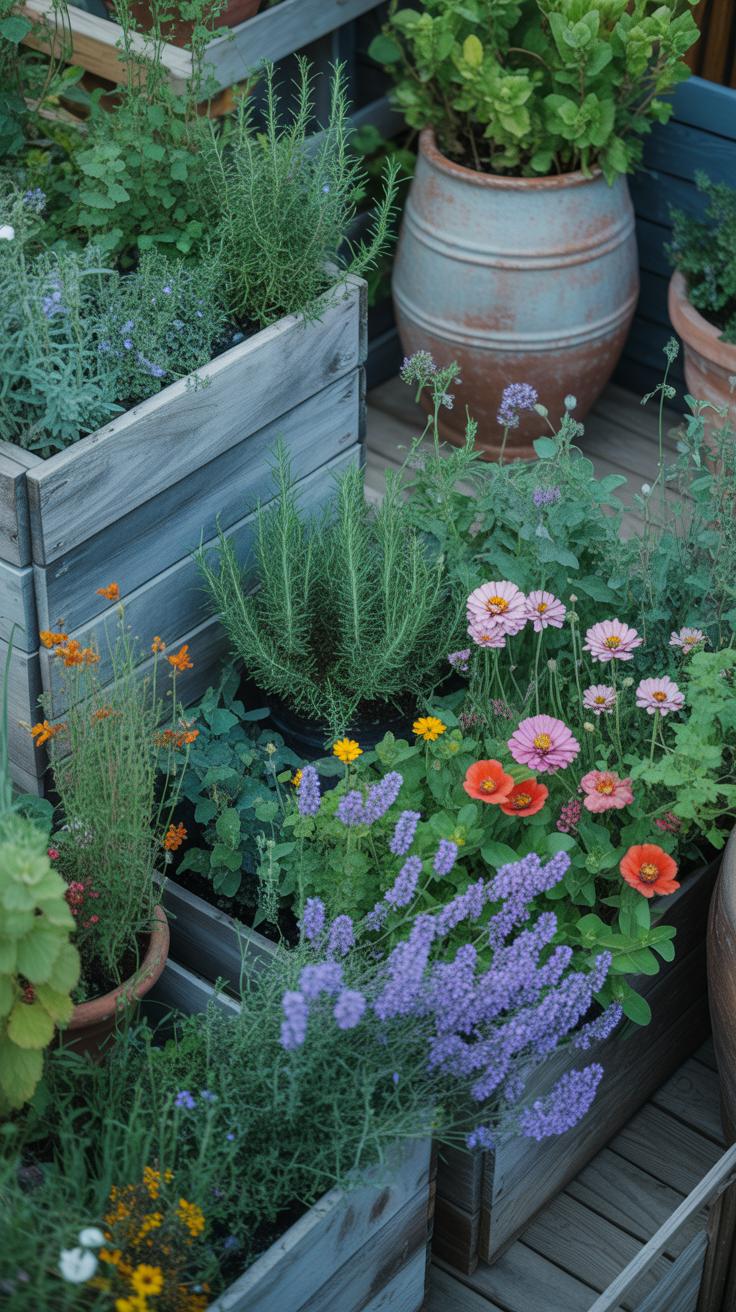
If your garden yard is small or uneven, containers and raised beds can open up a lot of possibilities for growing plants. They let you bypass some common problems like poor soil or limited space. I’ve tried both, and though they might seem simple, they can make a big difference.
Container Gardening
Choosing the right containers matters. Think about size, material, and drainage. Terracotta pots work well for plants that like drier roots, while plastic holds moisture longer. I once used large wooden barrels for tomatoes—those worked great but needed frequent watering.
Some plants thrive in containers: herbs, leafy greens, even dwarf fruit trees. But watch out—plants in pots can dry out faster and need more attention. Mixing flowers with vegetables can brighten the space too. Have you ever tried stacking pots vertically? It saves space and creates a cool visual effect.
Benefits Of Raised Beds
Raised beds lift your garden off the ground, making soil issues less of a headache. You get better drainage and can control soil quality more easily. I find it less tiring, too—no bending over endlessly. Plus, ground pests tend to bother raised beds less.
Building raised beds lets you create defined areas, which helps organize your plants and can even stop weeds from spreading. Using untreated wood or stone gives a natural look—you might want to line the beds to prevent rot. Sometimes, raised beds feel like little gardens within the garden, each with its own personality.
Conclusions
Your garden yard can be a special place with the right ideas and care. Simple decorations and thoughtful planting can make a big difference. Keep your garden neat by regular maintenance and enjoy the space you create. You don’t need to spend much money or time to see good results.
Try some ideas from this article and see what works best for you. Your garden yard can become a favorite spot for relaxing, playing, or spending time with family. Putting effort into your outdoor space will bring rewards in beauty and comfort.


